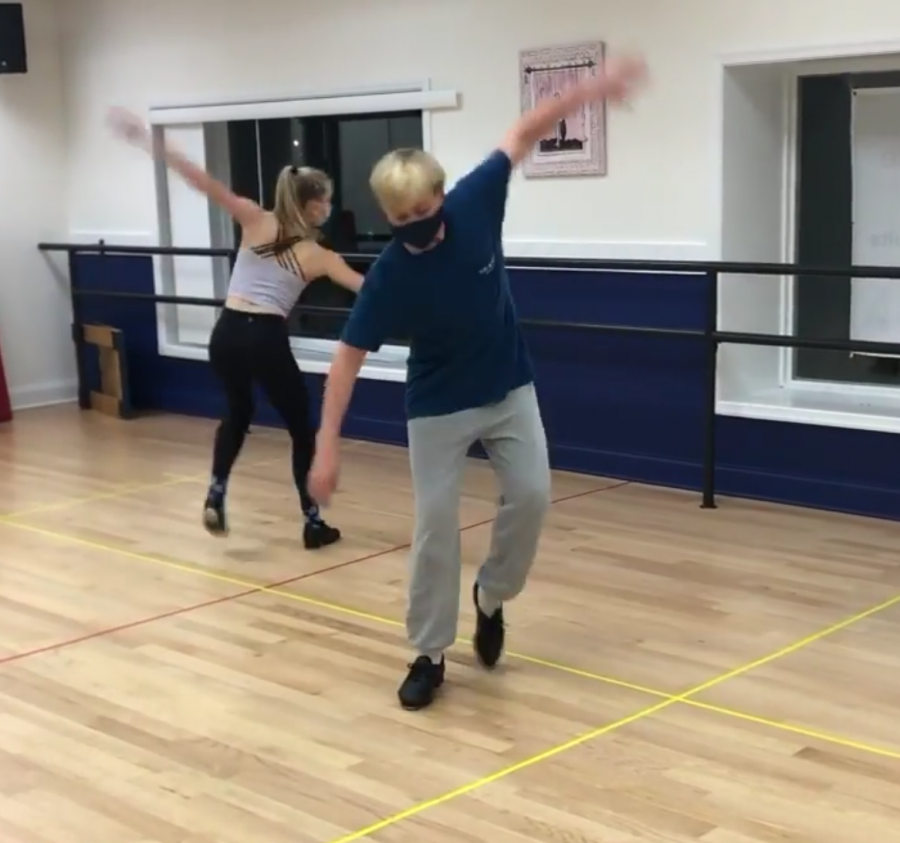The Double Life of John Potash
Amid the hundreds of teenagers attending Mendham high school, sophomore John Potash seemingly makes a fleeting impression. He is an average suburban middle-class child: performing competently in school, complaining about the strenuous workload, and cherishing the free days of the weekend. Yet John has been fostering an immense talent since the age of six– practicing nearly four hours a day, often sacrificing time with friends, and conforming to abnormal standards and brutal stereotypes to do what he loves most: dance.
John’s divergence from a typical childhood to that of concentrated effort in one area of expertise began in the third grade, during which he “went from doing soccer, baseball, football, and every other sport you could think of to quitting… and just doing dance.” The response was what could be expected of eight-year-old children accustomed to the gender separation of sports: shock and judgment. In this unexpected decision, John sacrificed friendships and the relative normalcy of childhood. He gradually recovered, finding peers who found his talent to be interesting and “wouldn’t care what [he] did outside of school.” This initial wave of difficulties was truly only the beginning, followed by “mean teachers, abnormal standards, constant pain,” unhealthy habits, struggles with body image. Those participating in and presiding over the dance industry are, as John describes in his unassuming manner, “not the nicest.” He has faced fanatically strict teachers who fail to recognize the line between just enough and way too much. He is forced to contort his body to “move and do things that seem humanly impossible,” suffering from the consequential pain and soreness that never fails to ail his limbs. He, as all dancers can likely attest to, has experienced low self-esteem and self-perception in moments of unhealthy comparison to those around him. “It’s hard to feel good about yourself when there’s a certain way that you should look that’s [nearly impossible] to achieve naturally,” he says.
Although certainly not the focus of his passion, competitions and performances are a large part of John’s dance career, the outlet through which he can demonstrate his talents and receive material compensation for the hardships of dance. The hours spent honing the steps in the studio reap benefits tenfold on stage, which “always brings out the best in everyone.” The intensity of the lights, the adrenaline coursing through his veins, the inherent desire to impress onlookers… all aspects of the stage create a near-perfect performance: a song brought to life by John’s palpable stage presence and devotion to his craft. He does assure me, however, that he “was never really in it to win something and get onto a stage,” discovering the benefits of dance in the friendships formed rather than the awards won. He has formed friendships with people in various states and even international countries, whom he met solely through the connection of dance. He has been molded by the toils and rewards of the sport, developing discipline, skill, tenacity, and (of course) flexibility. He has been “taught how to focus, remember things, and do countless other tasks to a tee.” John’s devotion to dance serves both as his own accomplishment as well as a reminder of the progressive and boundaryless direction society continues on a steadfast path towards.

Ana Clara Monaco is West Morris Mendham sophomore. She sprints for the Mendham Track & Field team and participates in multiple clubs. Outside of school,...










